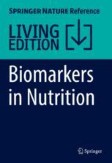Search
Search Results
-
The effects of laser cane cues on the freezing of gait of Parkinson’s disease patients: can increasing the laser light beam width play a role?
IntroductionFreezing of gait can be seen in a significant number of people with Parkinson’s disease. Disappointingly, the classic standard treatment...

-
Metal Chelators as a Potential Therapeutic Agent for Alzheimer’s Disease
Alzheimer’s disease (AD) is a neurological condition that causes behavioural abnormalities and a progressive decline in intellectual abilities....
-
Plasma MicroRNA (miRNA)s as Novel Markers of Nonalcoholic Fatty Liver Disease
Nonalcoholic fatty liver disease (NAFLD) is characterized by excessive fat build-up in the liver without any other evident causes of chronic liver...
-
A Eu-MOF-Based Fluorescent Sensing Probe for the Detection of Tryptophan and Cu2+ in Aqueous Solutions
Abnormal tryptophan (Trp) metabolism can be used as an important indicator of chronic hepatitis, paranoia, Parkinson’s disease and other diseases....

-
Plasma MicroRNA (miRNA)s as Novel Markers of Nonalcoholic Fatty Liver Disease
Nonalcoholic fatty liver disease (NAFLD) is characterized by excessive fat build-up in the liver without any other evident causes of chronic liver...
-
Disease progression strikingly differs in research and real-world Parkinson’s populations
Characterization of Parkinson’s disease (PD) progression using real-world evidence could guide clinical trial design and identify subpopulations....

-
An integrated gene-to-outcome multimodal database for metabolic dysfunction-associated steatotic liver disease
Metabolic dysfunction-associated steatotic liver disease (MASLD) is the commonest cause of chronic liver disease worldwide and represents an unmet...

-
Recent Advances in Targeting Transition Metals (Copper, Iron, and Zinc) in Alzheimer’s Disease
Changes in the transition metal homeostasis in the brain are closely linked with Alzheimer’s disease (AD), including intraneuronal iron accumulation...

-
Resmetirom for nonalcoholic fatty liver disease: a randomized, double-blind, placebo-controlled phase 3 trial
Nonalcoholic steatohepatitis (NASH) is a progressive liver disease with no approved treatment. MAESTRO-NAFLD-1 was a 52-week randomized,...

-
Glial Cells as Key Orchestrators of Neural Degeneration in Basal Ganglia Disorders
The congregation of nuclei in the forebrain, diencephalon and midbrain called ‘basal ganglia’ forms an important structure for neural signals...
-
Specific immune status in Parkinson’s disease at different ages of onset
Recent evidence suggests that innate and adaptive immunity play a crucial role in Parkinson’s disease (PD). However, studies regarding specific...

-
Plasma Lipocalin 2 in Alzheimer’s disease: potential utility in the differential diagnosis and relationship with other biomarkers
BackgroundLipocalin-2 is a glycoprotein that is involved in various physiological and pathophysiological processes. In the brain, it is expressed in...

-
Role of metals in Alzheimer’s disease
Metal homeostasis in the central nervous system (CNS) is a crucial component of healthy brain function, because metals serve as enzymatic cofactors...

-
Multifunctional Nanocarriers for Alzheimer’s Disease: Befriending the Barriers
Neurodegenerative diseases (NDDs) have been increasing in incidence in recent years and are now widespread worldwide. Neuronal death is defined as...

-
Nutrition and Brain Functions in Health and Disease
Adequate food consumption of dietary nutrients is vital for normal brain functions. There is considerable proof that dietary nutrition helps in the...
-
Corneal nerve fiber loss relates to cognitive impairment in patients with Parkinson’s disease
Cognitive impairment in Parkinson’s disease (PD) adversely influences quality of life. There is currently no available biomarker to predict cognitive...

-
Iron and Neuro-Cognition
Born as Khem in ancient China, India, and Egypt; chemistry or ALCHEMY has always been there, throughout ancient times- seeking a remedy and...
-
Challenges and Opportunities of Metal Chelation Therapy in Trace Metals Overload-Induced Alzheimer’s Disease
Essential trace metals like zinc (Zn), iron (Fe), and copper (Cu) play an important physiological role in the metabolomics and healthy functioning of...

-
Wilson disease tissue classification and characterization using seven artificial intelligence models embedded with 3D optimization paradigm on a weak training brain magnetic resonance imaging datasets: a supercomputer application
Wilson’s disease (WD) is caused by copper accumulation in the brain and liver, and if not treated early, can lead to severe disability and death. WD...

-
High genetic carrier frequency of Wilson’s disease in France: discrepancies with clinical prevalence
BackgroundWilson’s disease (WD) is a rare autosomal recessive metabolic disease caused by ATP7B gene mutations tat cause excessively high copper...
